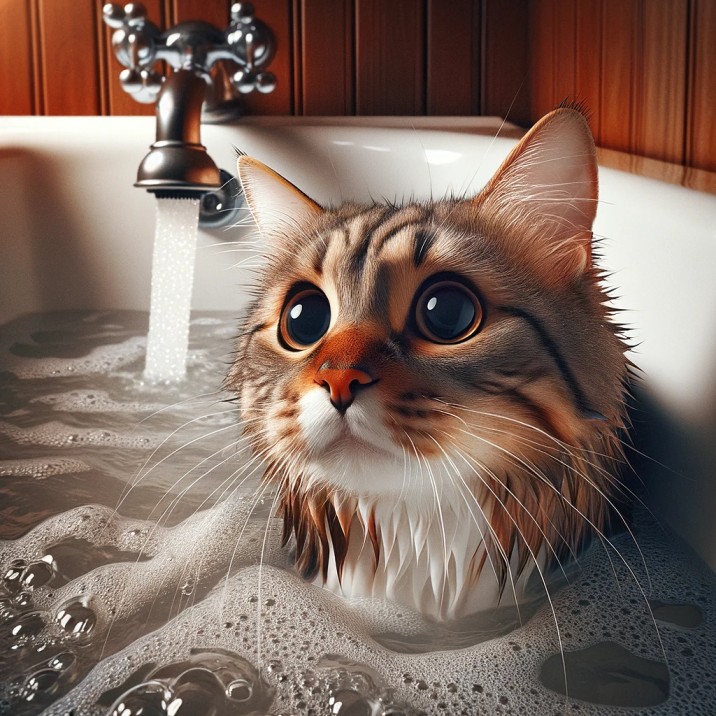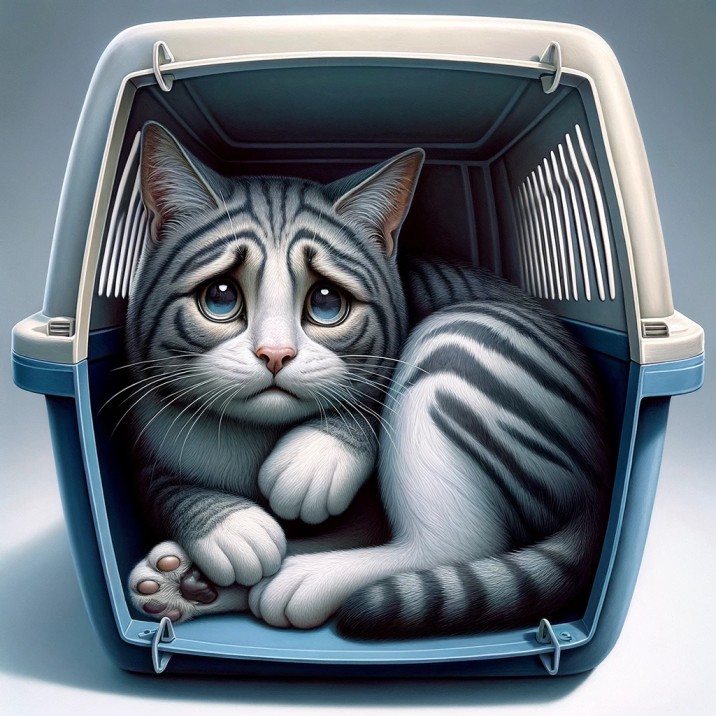We will share a list of What scares cats the most? Cats, known for their curious and independent nature, also have their own set of fears. Understanding what scares cats the most is not just about unraveling a feline mystery, but it’s also crucial for ensuring their well-being and mental health. In this article, we delve into the common fears in cats, rooted in their natural instincts and experiences.
1. Loud Noises

Cats have a highly developed sense of hearing, evolved primarily for hunting. They can detect a wide range of frequencies, from very low to very high, far exceeding human capabilities. This sensitivity allows them to hear the high-pitched sounds made by their prey, such as rodents. However, this also means that sudden, loud noises, which are far beyond the natural environmental sounds, can be alarming and unsettling.
Several everyday occurrences can be sources of loud noises that frighten cats. These include thunderstorms, fireworks, loud music, household appliances like vacuum cleaners, and construction work. Even louder-than-normal television volumes or shouting can be distressing to a sensitive cat.
When exposed to loud noises, cats may exhibit a range of physical and behavioral responses. They might run and hide, show signs of aggression, or engage in stress-induced behaviors like excessive grooming. In extreme cases, chronic exposure to loud noises can lead to long-term anxiety and stress-related health issues.
2. Unfamiliar Environments

Cats are territorial animals and are strongly attached to their environment. Changes in their living space or moving to a new location can cause anxiety and fear. Unfamiliar smells, sights, or sounds in a new environment can make a cat feel insecure and scared. Their territorial nature ties them closely to familiar spaces, and any alteration, be it moving to a new home or rearranging furniture, can cause stress and anxiety. Cats rely heavily on scent markers to feel secure, and an unfamiliar environment lacks these comforting signals. This disruption can lead to hiding behaviors, reduced appetite, or increased vocalization as they attempt to cope with the change. Understanding this, cat owners can aid their pets by gradually introducing them to new environments and maintaining elements of familiarity, such as toys or bedding, to ease the transition.
3. Strangers

Many cats are wary of strangers. This fear can stem from a lack of socialization as kittens or negative experiences with unfamiliar people. Cats may hide or display defensive behaviors when confronted with people they do not recognize. Delving deeper into cats’ fear of strangers, this apprehension is rooted in their instinctive need for safety and familiarity. Cats, especially those not adequately socialized during their kittenhood, can view strangers as potential threats, triggering a fear response. This reaction may manifest as hiding, hissing, or even aggression. Positive and gradual introductions are essential to help cats overcome this fear. Providing a safe retreat and allowing the cat to approach on its terms can significantly reduce stress. Additionally, encouraging calm and non-threatening interactions with visitors can help build a cat’s confidence and reduce its anxiety around unfamiliar people. Consistency and patience are key in helping cats adjust and feel more comfortable around strangers.
4. Aggressive Animals or Other Cats

Cats can be intimidated by the presence of aggressive animals, especially other cats that may invade their territory. Even within the same household, conflicts between cats can lead to fear and stress. The fear of aggressive animals or other cats is deeply ingrained in a cat’s instinctual behavior. Cats are solitary creatures by nature, and the presence of an unfamiliar or aggressive animal, particularly another cat, can be perceived as a threat to their territory and resources. This fear can trigger a range of defensive behaviors, from fleeing to aggressive posturing. In multi-cat households, establishing a hierarchy can sometimes lead to tension and fear among less dominant cats. Ensuring each cat has its own space, resources, and attention is crucial to mitigate these fears and promote harmony. Additionally, slow and controlled introductions, along with environmental enrichment, can help in easing the tensions in such situations, allowing cats to gradually adapt to each other’s presence.
5. Veterinary Visits

It’s important to recognize the multifaceted nature of this anxiety. The fear often begins with the stress of transportation, as many cats dislike being confined in carriers. Upon arrival at the clinic, the unfamiliar environment filled with strange smells, sounds, and the presence of other animals, exacerbates their anxiety. The clinical handling by veterinarians, though necessary, can further distress a cat who is already feeling vulnerable. To mitigate this fear, gradual acclimatization to carriers and positive associations with them can be helpful. Some veterinarians also specialize in cat-friendly practices, using pheromones and a calm environment to soothe anxious felines. Owners can also play a calming role during visits, providing reassurance through gentle petting and soft speech. For highly anxious cats, discussing options like at-home visits or sedation with a veterinarian may be beneficial. Ultimately, familiarizing a cat with the aspects of a vet visit in a controlled and comforting manner can significantly reduce their stress.
6. Water

While not all cats are afraid of water, many dislike being immersed in it. This aversion can be due to the discomfort of being wet or the unfamiliar sensation of water on their fur.
7. Confinement

Cats generally do not like to be confined or feel trapped. Being in a small space or unable to escape can cause panic and fear. This is often seen during car rides or when being restrained for grooming or medical reasons.
8. Cucumbers (and Similar Objects)

The internet phenomenon of cats being scared of cucumbers likely stems from the element of surprise and the object’s snake-like shape. This reaction is more about being startled by an unexpected object appearing suddenly behind them.
9. Aging-Related Fears

As cats age, they may develop fears due to declining senses or cognitive dysfunction. Older cats might become more anxious and fearful due to decreased vision, and hearing, or changes in their mental state.
Understanding what scares cats is essential for cat owners to create a safe, secure, and comforting environment. Recognizing and respecting a cat’s fear without forcing them into fearful situations is key to helping them overcome these fears. Gradual exposure to feared objects or situations, along with positive reinforcement, can be effective in reducing fear. It’s also important to provide safe spaces in the home where cats can retreat to feel secure. Ultimately, patience and understanding go a long way in addressing the fears of our feline friends.

